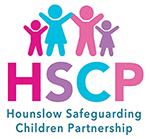Domestic Abuse
Domestic abuse is a high harm, high volume crime that remains largely hidden. All forms of domestic abuse – psychological, economic, emotional, and physical – come from the abuser’s desire for power and control over other family members or intimate partners. Although every situation is unique, there are common factors involved. Anyone can be affected by domestic abuse – regardless of age, disability, sex, sexual orientation, gender identity, gender reassignment, race, religion or belief. In addition, domestic abuse can manifest itself in different ways within different communities. The impact on individual victims is severe and can be wide-ranging and long-lasting.
How does it affect children?
- Witnessing violence may teach children to use violence.
- Domestic abuse can affect children in serious and long-lasting ways.
- Where there is domestic abuse there is often child abuse.
- Children will often blame themselves for domestic abuse.
- Alcohol misuse is very common contributing factor when violence occurs in families.
- Pregnant women are more vulnerable to domestic abuse.
- Children, who witness, intervene, or hear incidents are affected in many ways. What can be guaranteed is that children do here, they do see, and they are aware of abuse in the family.
- Domestic abuse teaches children negative things about relationships and how to deal with people.
- It can teach them that violence is an acceptable way to resolve conflict
- Children learn how to keep secrets.
- Children learn to mistrust those close to them.
- They learn that children are responsible and to blame for distress or violence.
The prevention of domestic abuse and the protection of all victims lies at the heart of the Domestic Abuse Act 2021; which defines domestic abuse as:
(2) Behaviour of a person (“A”) towards another person (“B”) is “domestic abuse” if— (a) A and B are each aged 16 or over and are “personally connected” to each other, and (b) the behaviour is abusive
(3) Behaviour is “abusive” if it consists of any of the following—
(a) physical or sexual abuse;
(b) violent or threatening behaviour;
(c) controlling or coercive behaviour;
(d) economic abuse.
(e) psychological, emotional or other abuse; and it does not matter whether the behaviour consists of a single incident or a course of conduct.
(4) “Economic abuse” means any behaviour that has a substantial adverse effect on B’s ability to — (a) acquire, use or maintain money or other property, or (b) obtain goods or services.
(5) For the purposes of this Act, A’s behaviour may be behaviour “towards” B despite the fact that it consists of conduct directed at another person (for example, B’s child).
You can read the full statutory guidance here Domestic Abuse Act 2021 – GOV.UK (www.gov.uk)
Multi Agency Risk Assessment Conference (MARAC)
The MARAC is a meeting held to discuss high-risk cases of domestic abuse. It brings together representatives from several statutory and voluntary agencies to share information and put measures in place to increase the safety, health and wellbeing of domestic violence victims and their children.
At the heart of a MARAC is the working assumption that no single agency or individual can see the complete picture of the life of a victim, but all may have insights that are crucial to their safety. The Perpetrator of abuse should not be informed of the MARAC Referral.
The MARAC is not an agency and does not have a case management function. When referring to the MARAC staff should continue to work with the survivor to reduce risk and make appropriate safeguarding referrals.
Hounslow provides half day training, through the HCSP, as well as single agency training, to all professionals that may encounter domestic abuse in their line of work. For more information about making a referral or accessing training you can contact Community Safety on community.safety@hounslow.gov.uk.
- Ascent Advice and Counselling– Support for Gender Based Violence
- Hounslow Domestic violence and sexual violence support
- Deaf Hope UK Domestic Abuse Service
- Information for Local Areas on the change to the Definition of Domestic Violence and Abuse
- Safe Lives – Ending Domestic Abuse
- Clare’s Law: Domestic Violence Disclosure Scheme
- Metropolitan Police: What is Domestic Abuse?
- Victim Support
- Refuge
- Southall Black Sisters
- Galop (LGBT Community)
- National Lesbian, Gay, Bisexual and Trans (LGBT) Domestic Violence Helpline: 0300 999 5428
- Family Lives Helpline: 0808 800 2222
- Childline: 0800 1111
- MALE helpline: 0808 801 0327
- Freephone 24 hour National Domestic Violence Helpline 0808 2000 247
- NSPCC Helpline 0808 800 5000
Textphone: 0800 056 0566
Home Office Guidance
The Home Office in partnership with AVA has created guidance entitled ‘Information for Local Areas on the change to the Definition of Domestic Violence and Abuse’.
Home Office Information includes:
- Teenage Relationship Abuse
- How to respond to cases
- Services
- Young People using Violence and Abuse in Close Relationships
- Child to Parent Violence
- Harmful Traditional Practices, and Useful Resources and Links.

